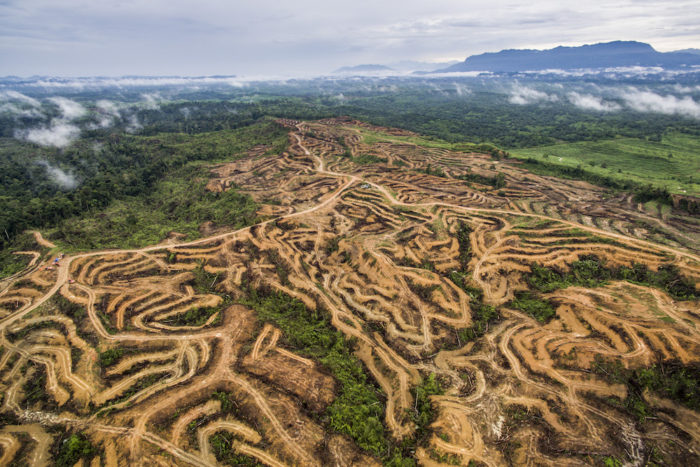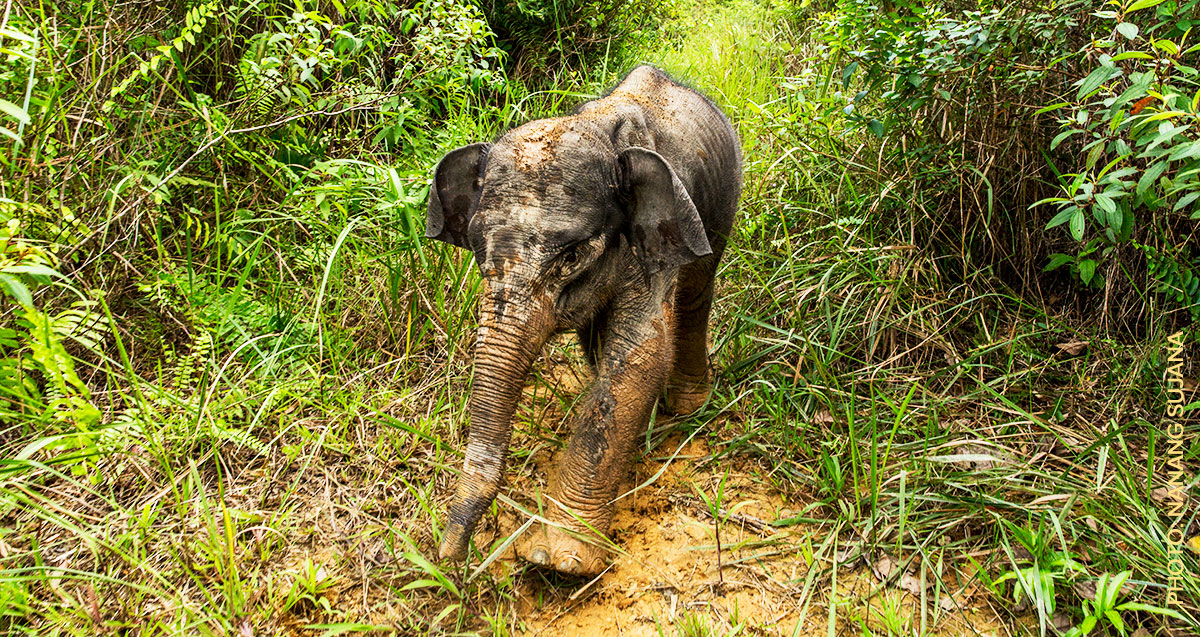Covering 4.36 million square miles — or less than 10% of the Earth’s ice-free land — intact forests are our last defense against biodiversity loss and the climate crisis.
They must be protected from deforestation, as well as from fragmentation and degradation, where a forest is destroyed more gradually through overuse.
We are losing our tropical rainforests at an alarming rate — the equivalent of one football field every six seconds. This has a huge impact on the world’s biodiversity because species diversity is so incredibly high in tropical rainforests.
It’s estimated that there are 8.7 million animal and plant species in the world but we are losing them. It’s a heartbreaking loss of life as so many iconic species — like the Sumatran rhino, tiger, and orangutans — could disappear forever. A landmark report from the Intergovernmental Science-Policy Platform on Biodiversity and Ecosystem Services (IPBES) warns that around 1 million of these animal and plant species face the threat of extinction in the wild, many within decades, and more than ever before in human history. Scientists call it “the 6th mass extinction” — the biodiversity crisis we’re facing is deeply connected to climate change, and it’s already altering life on Earth. If we don’t act fast, the consequences will be devastating.
Why exactly is biodiversity so important for people and the planet? Here are five reasons that are scientifically proven:
1. Biodiversity Supports Healthy Ecosystems

If ecosystems were like puzzles with thousands of pieces, taking out one or two pieces would not destroy it — you would still recognize what the puzzle is supposed to look like. But with every additional piece you take away, the overall stability and health of the ecosystem is being diminished until, at some point, the connections break and the entire ecosystem falls apart.
By some estimates, biodiversity hotspots like the rainforests of the Amazon have lost up to 17 percent of their forests in the past 50 years. And scientists believe that EVERY DAY, species are driven to extinction in the world’s tropical rainforests.
Rainforest ecosystems are a vital global resource, not only contributing to the air we breathe and the water we drink, but directly supporting critical services like fresh water, pollination, soil fertility and food for millions of people and wildlife.
2. Biodiversity is Crucial for Our Health
From Ebola to the COVID-19 global pandemic, more and more research shows that there’s a close link between disease outbreaks and the degradation of nature, particularly in biodiversity hotspots like the rainforests of Southeast Asia, Central Africa and South America.How? Pathogens such as the novel coronavirus usually depend on a very specific host — until they mutate and pick a new host species. If this happens in an environment where ecosystems and biodiversity are degrading rapidly, the probability for it to jump to humans will be much higher than in a healthy environment, because the virus has literally nowhere else to go. This scenario is exacerbated particularly where animals —typical host animals like bats and other “bushmeat” or animals such as the pangolin that are used in Chinese medicine— are removed from their habitat for wildlife trade, as it opens all gates for mutations and host-shifts.
3. Biodiversity and a Healthy Climate are Connected
The growing climate crisis is one of the main drivers for the “sixth mass extinction” we’re experiencing right now. Alongside fossil fuel extraction, the destruction of forests, especially tropical rainforests and carbon rich peatlands, and the degradation of natural ecosystems are major contributors to the climate crisis. And emissions from deforestation are only getting worse, having more than doubled in the last few years.Estimates vary, but around 23 percent of net global greenhouse gas emissions is caused by deforestation, the destruction of forest ecosystems and other land uses. That’s because forests, trees and plants also store carbon in their tissue, roots and soil, locking it in the ground and living ecosystems where it belongs: which means that forests are both our greatest protection from climate chaos and also one of the greatest threats when destroyed.
4. A Healthy Economy Depends on Healthy Biodiversity
Millions of people depend on nature and its bounty for their day-to-day livelihoods. This is particularly true for frontline communities in hotspots like rainforests, where these ecosystems are a source of food, water, fuel, medicines and income.
But forest health isn’t only critical locally: we all depend on the services forests provide to us globally. Ecosystem services like the pollination of crops and clean water are essential for rural and urban water suppliers, agriculture, and our global health systems.
Globally, at least 50 percent of the world’s economy is highly or moderately dependent on nature, and 70 percent of the world’s poor depend on natural resources. Biodiversity is literally what fuels a healthy economy!
5. The Role of Biodiversity in Culture
Indigenous Peoples around the world have long been forest defenders, integrating forest stewardship as part of their cultural heritage. In fact, while Indigenous peoples manage only 28 percent of the world’s land area, they protect 80 percent of the world’s biodiversity.
Animals and plants have been at the heart of cultural and religious life since the beginning of mankind — as symbols, inspiration, myths and story-telling. From the quetzal bird symbolizing the Aztec god Quetzalcoatl to the nomadic people of Central Asia treasuring their horses more than anything else and the Indigenous dayak tribes of Borneo connections to the Rhinoceros Hornbill which is a messenger from the spirit world: The bond between humans and all the living beings around us is unbreakable and manifested in countless ways. Animals, birds, trees, flowers … they all have shaped us as the human species and how we think about the world and ourselves.